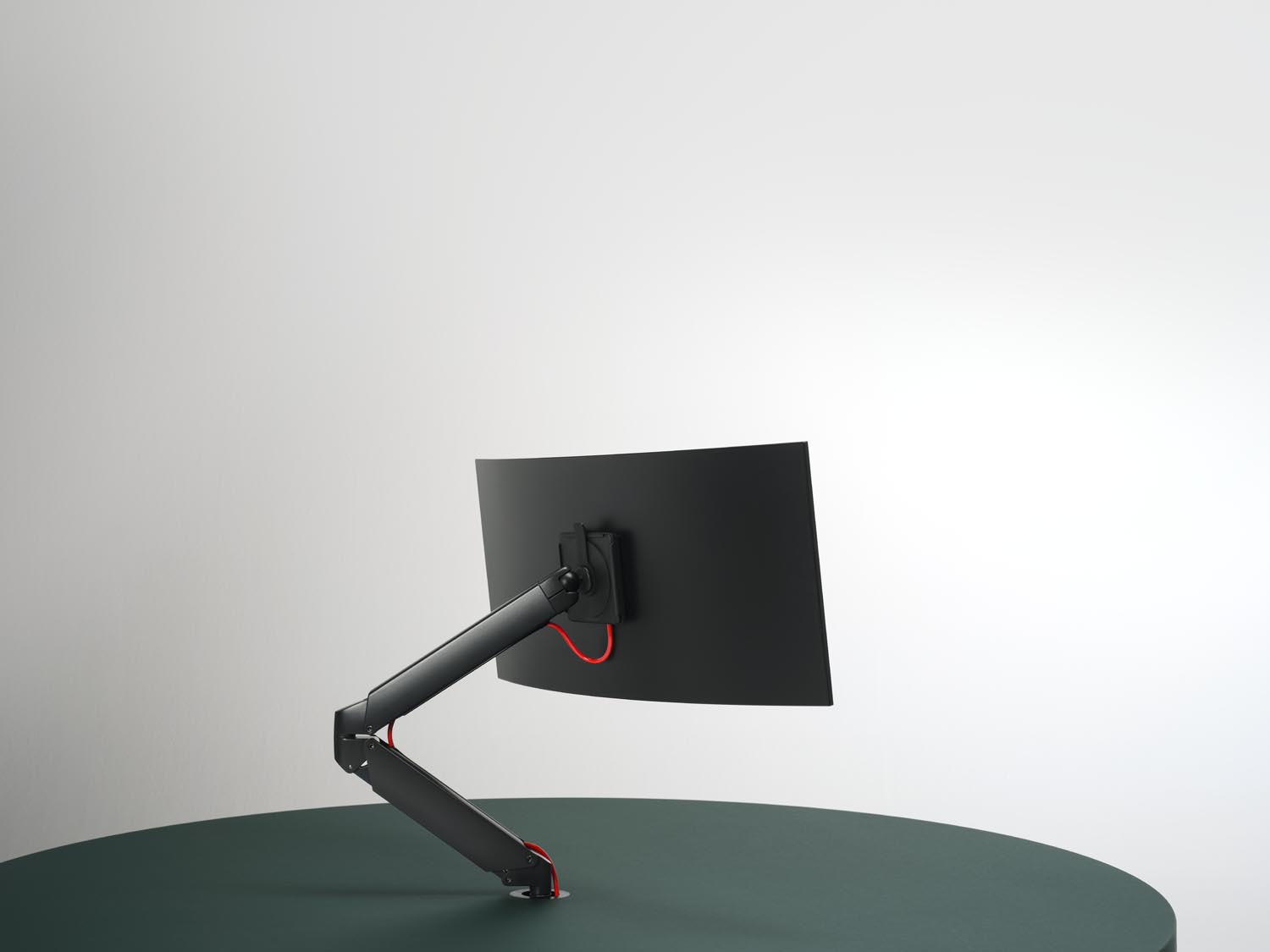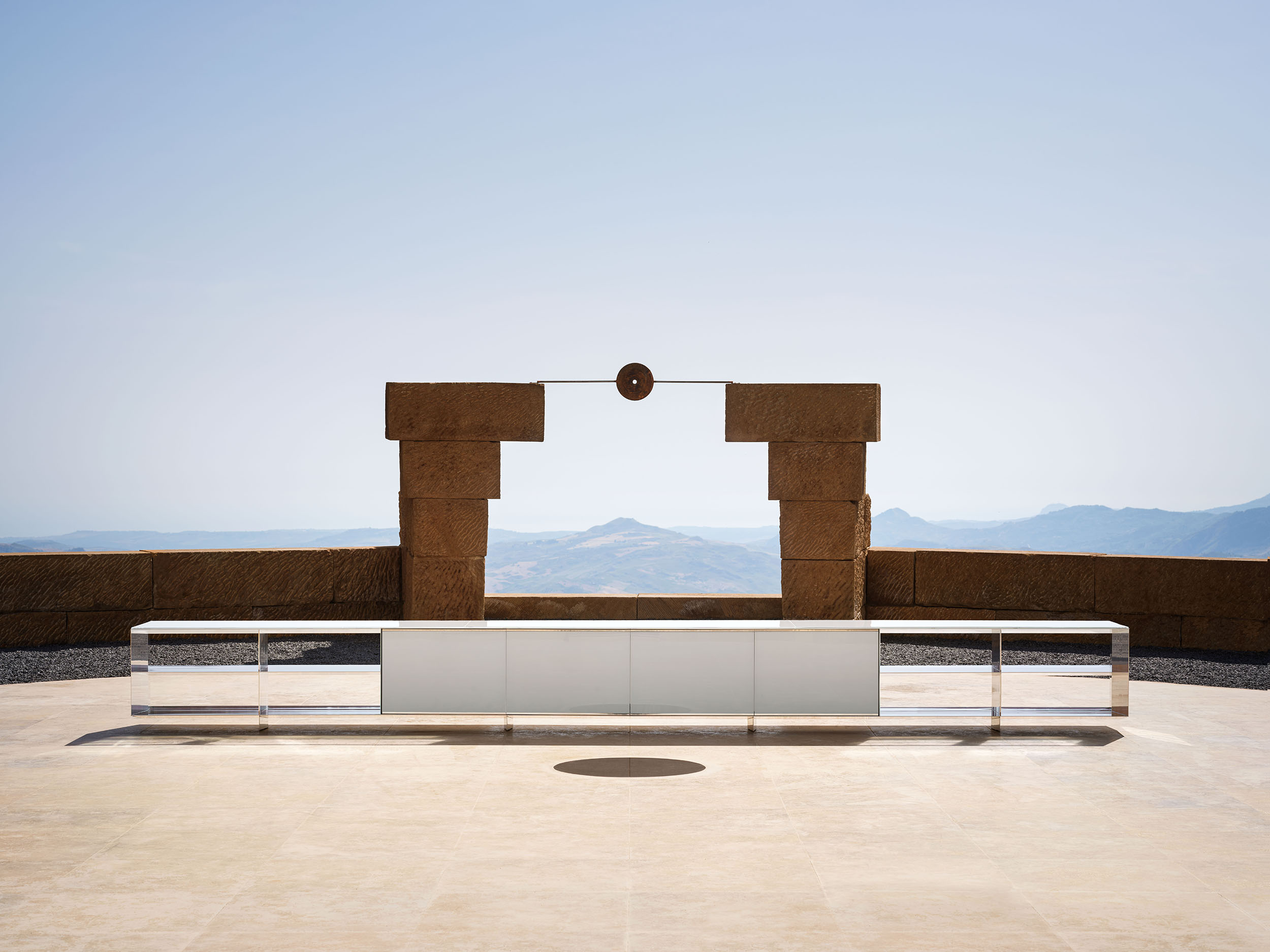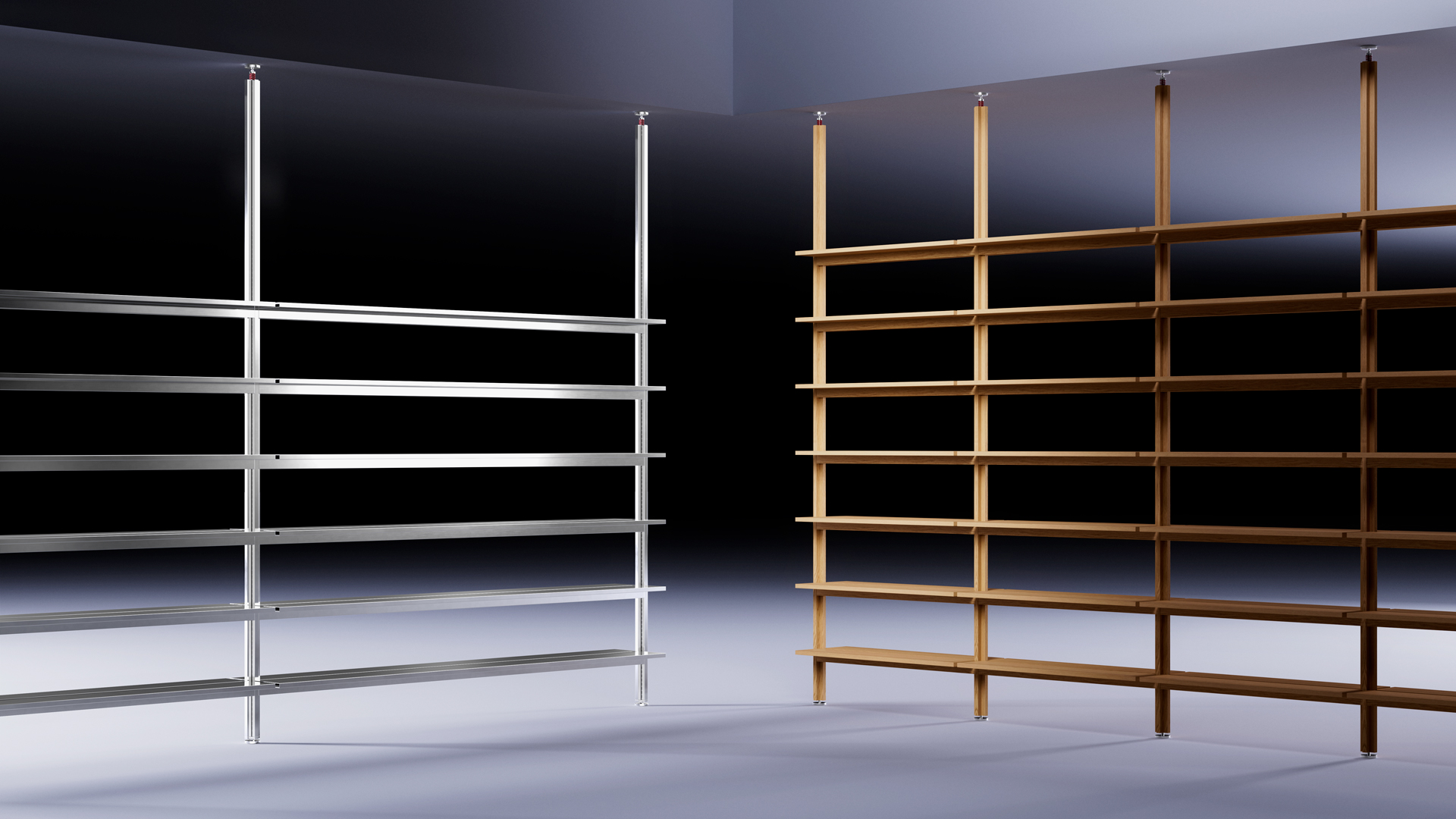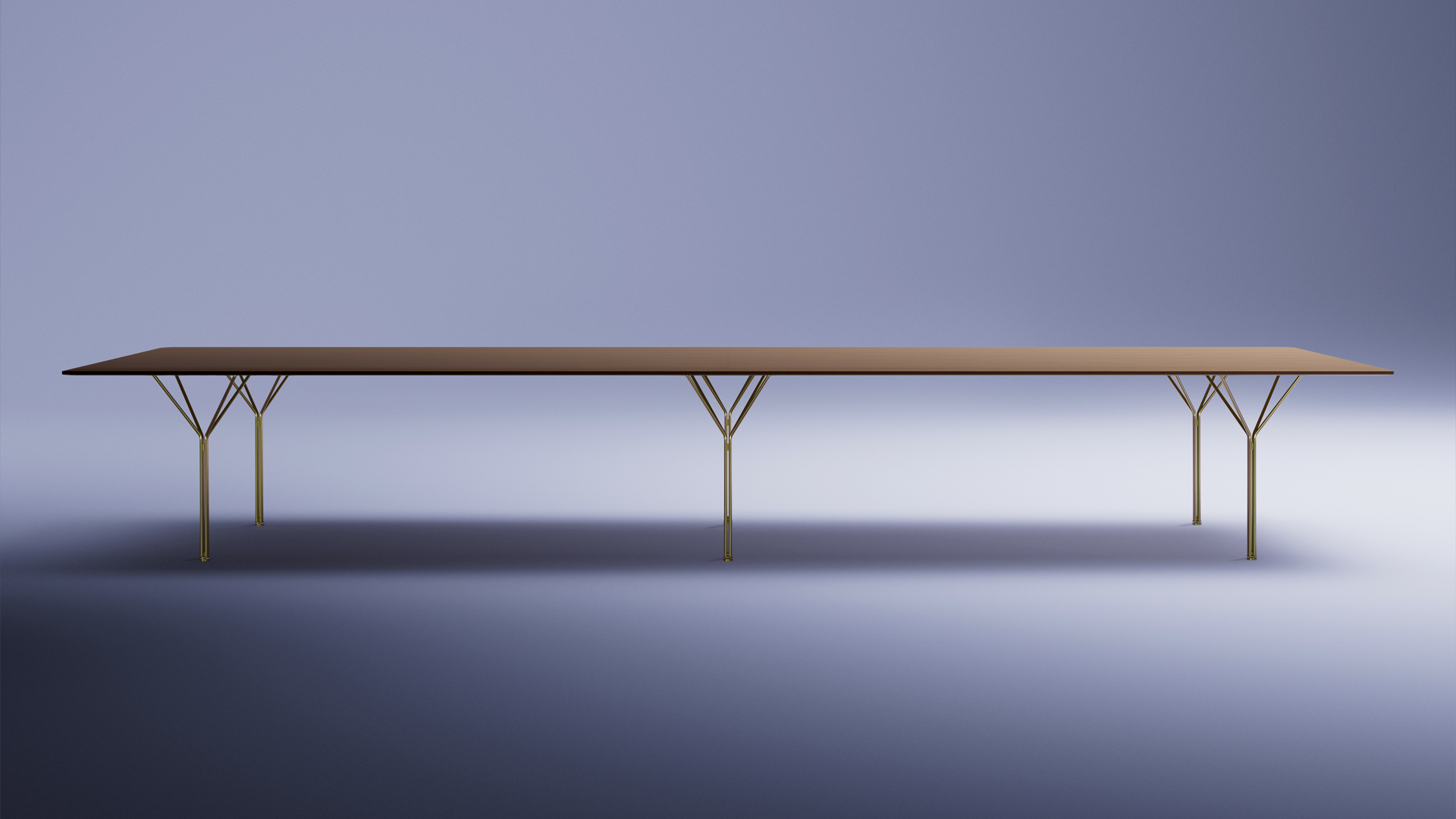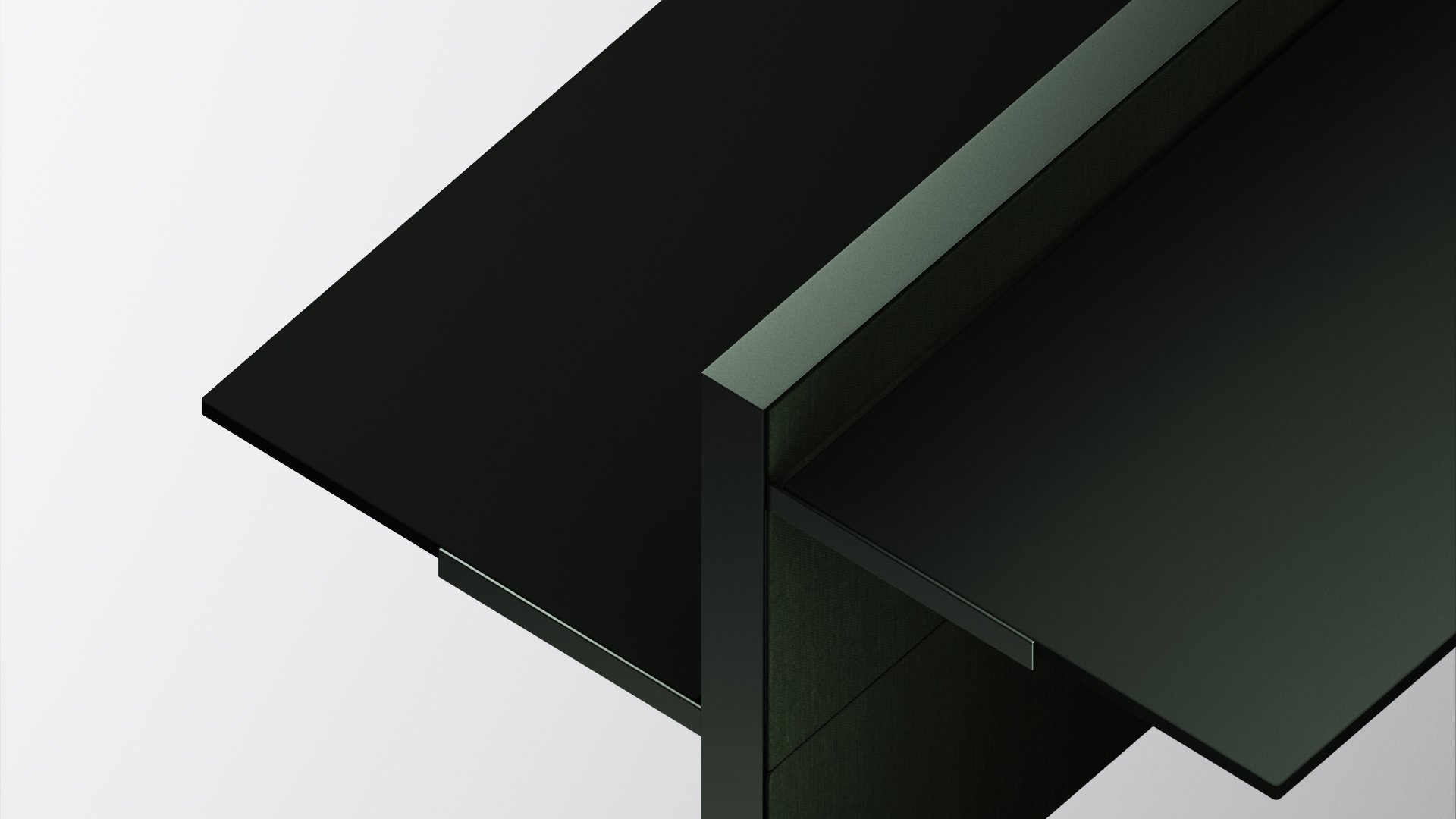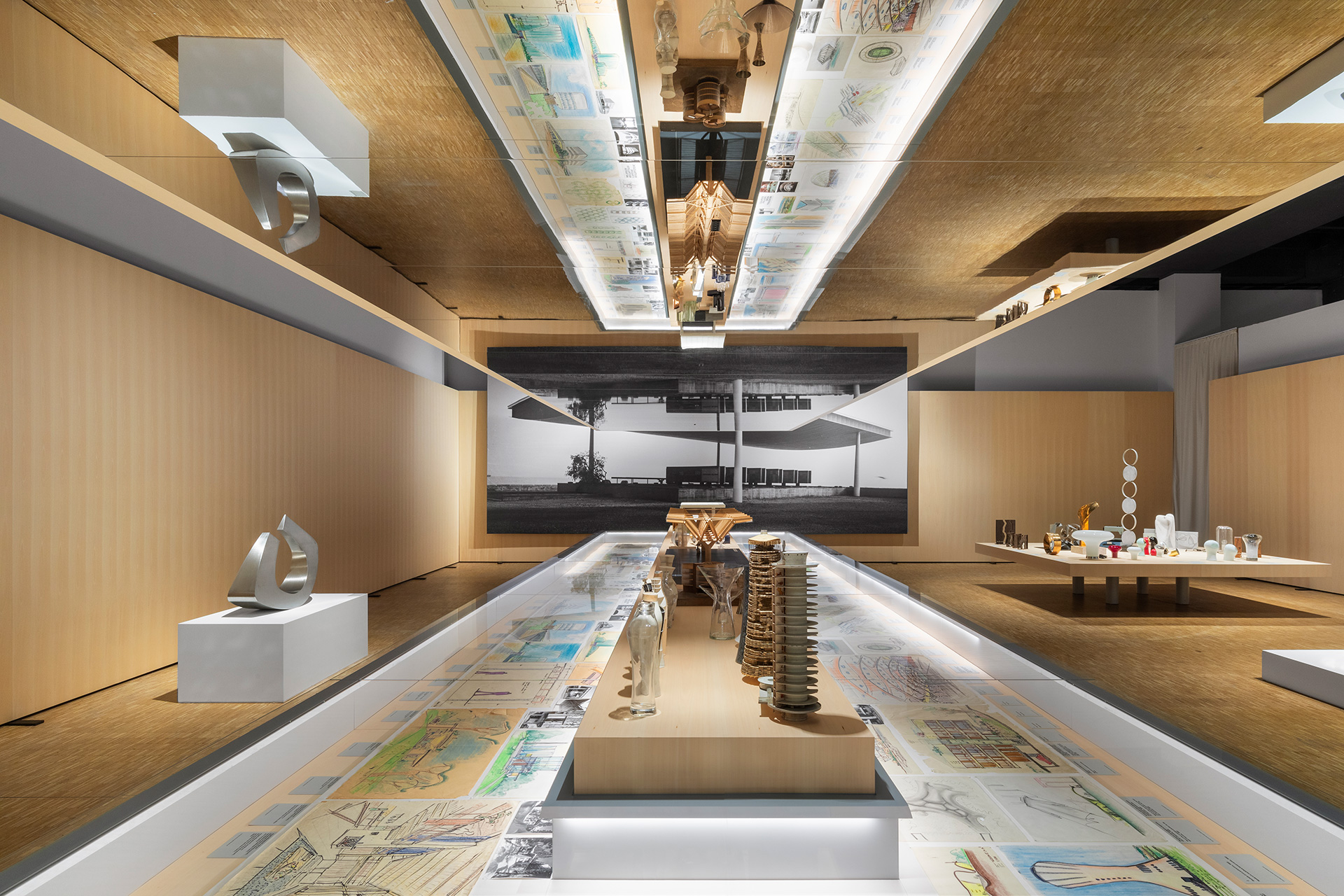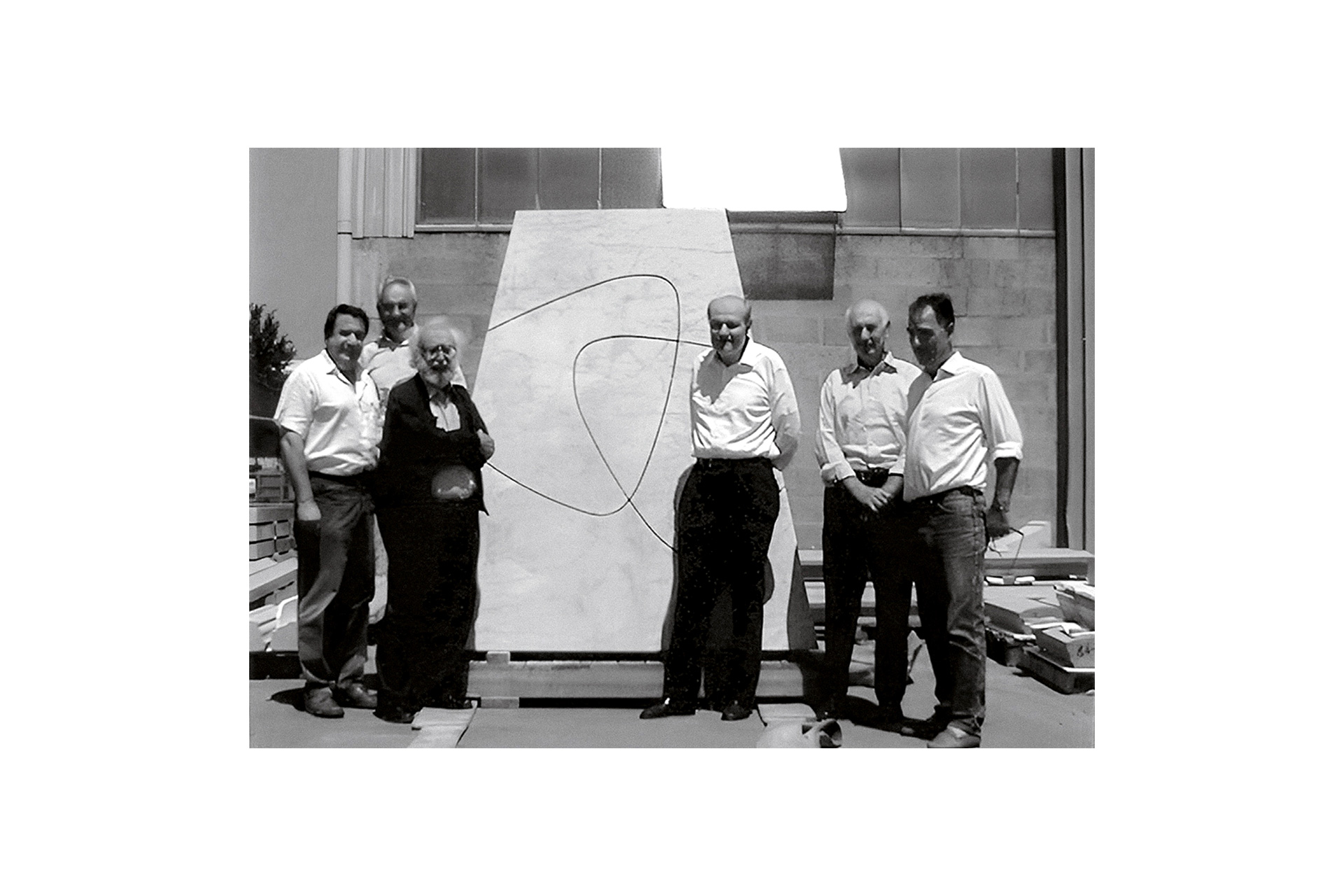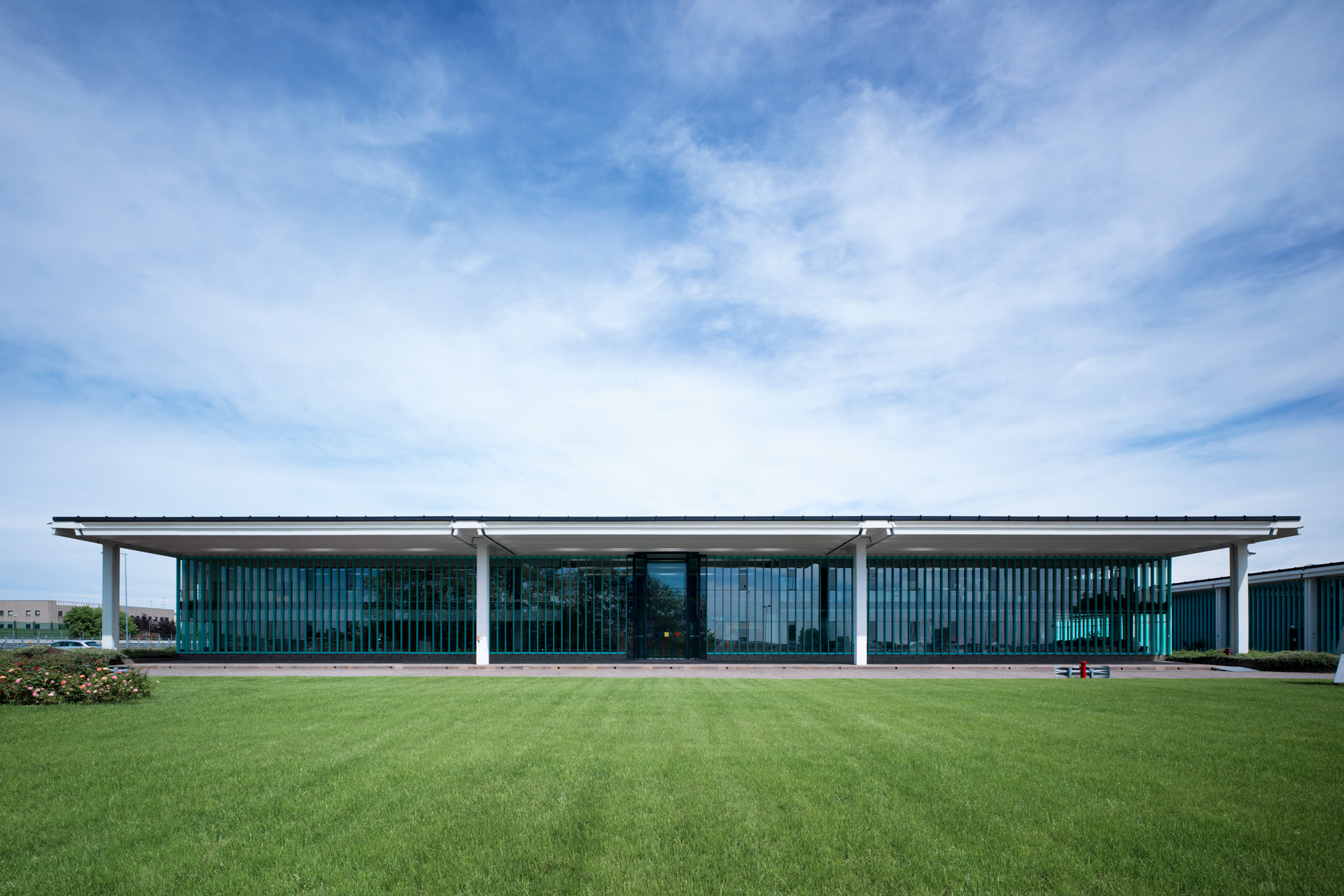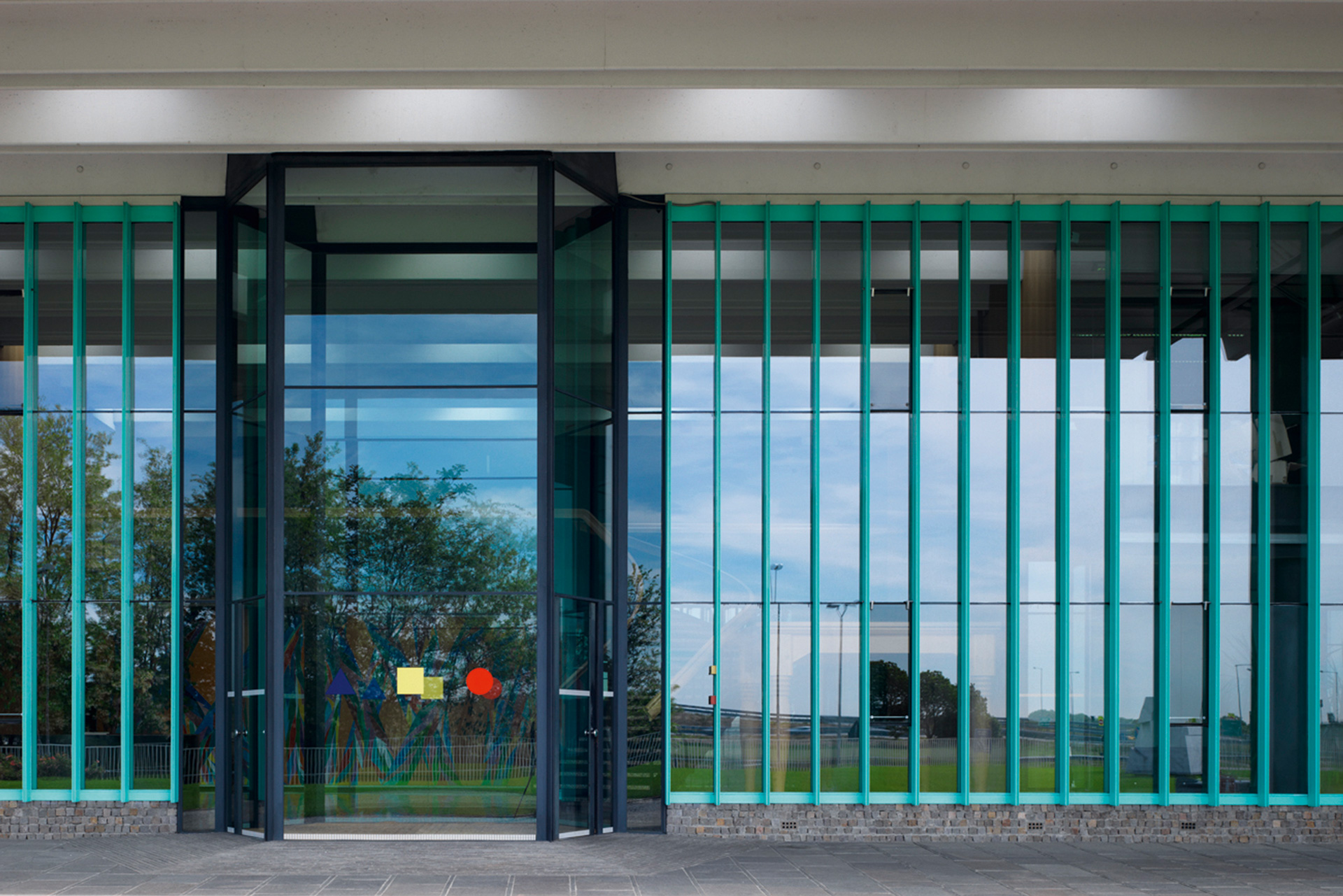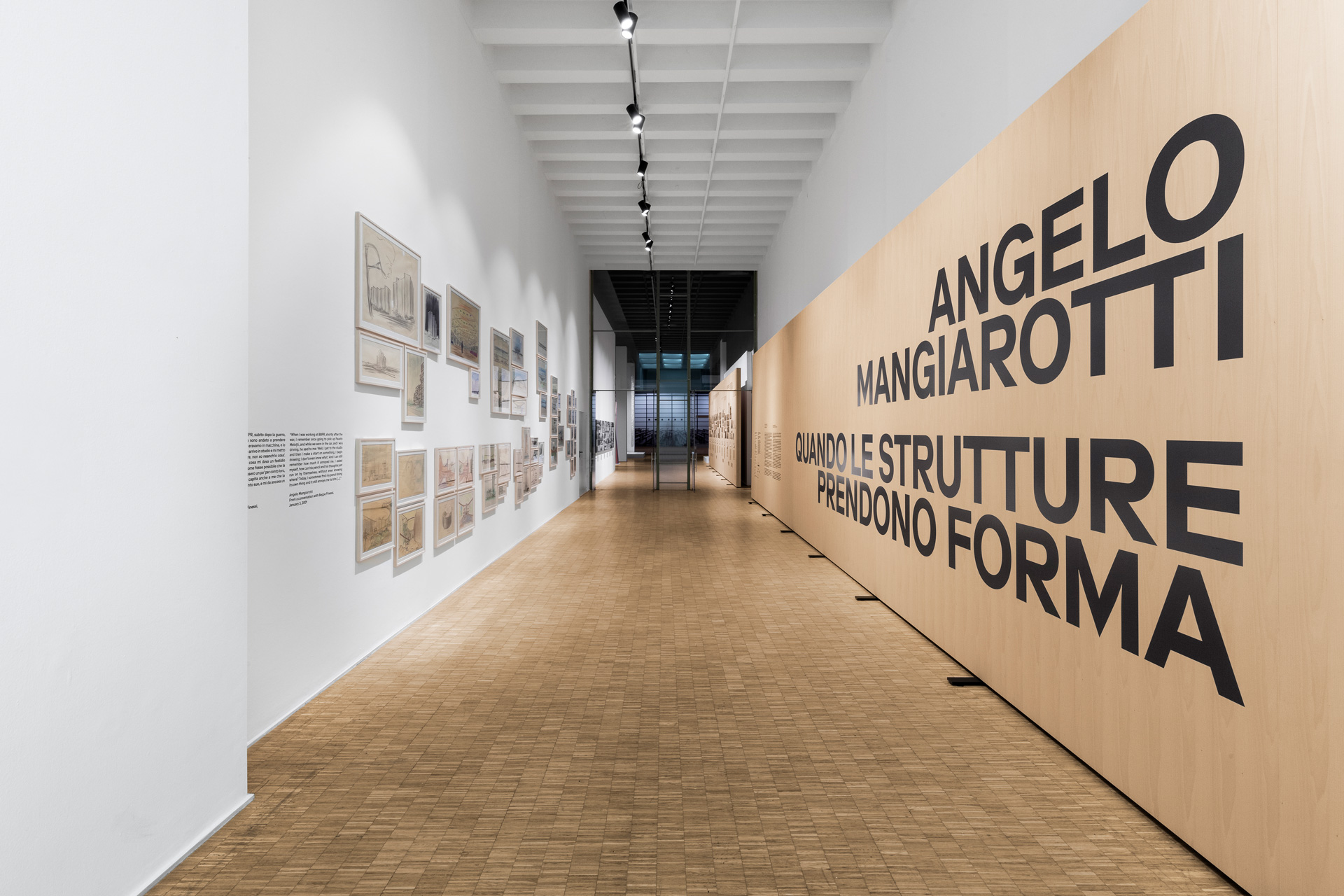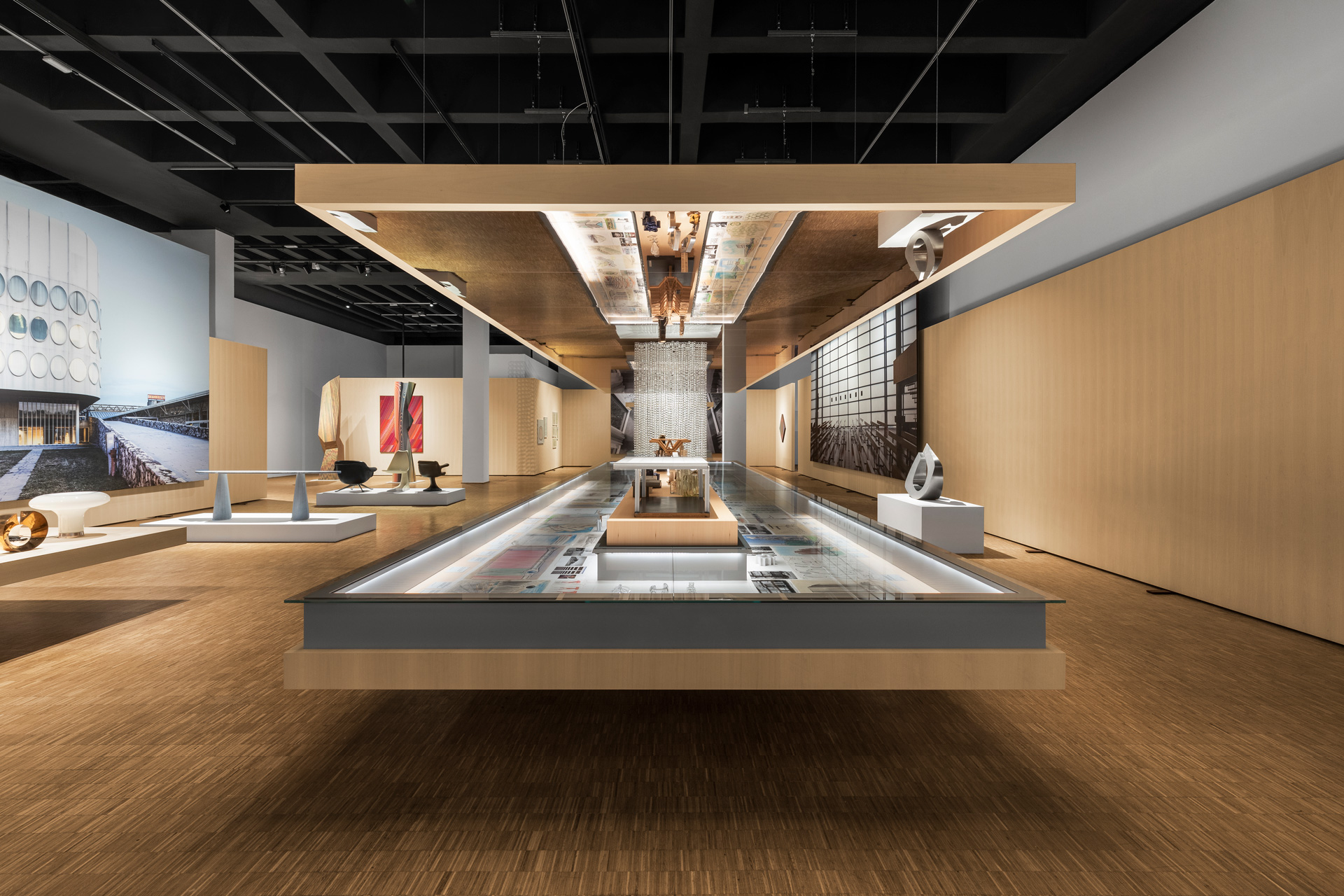
ANGELO MANGIAROTTI
Quando le strutture prendono forma
Some encounters leave indelible marks in the story of people, territories and even companies.
When UniFor and Angelo Mangiarotti met was one such encounter: this relationship stems from a natural and immediate similarity of views and not just from fortuitous coincidence.
When UniFor began its new adventure in the early 1970s, Molteni&C was already a well-established company headquartered in Giussano. The man at the helm, Angelo Molteni, had understood that office furniture was the future: open-space planning was changing how people worked and the industry needed to find an effective and immediate response to the needs and comfort requirements of office workers.
This gave him the idea of building a new factory, based on new production methods but above all on a new design concept. At the time, Molteni was very much impressed by the Modulo3 system, designed by Bob Noorda and Franco Mirenzi and manufactured by the engineer Michele Casaluci, owner of the company by the same name that also made another innovative product, the 4D modular system by the architect Angelo Mangiarotti.
In 1967 Angelo Molteni bought Casaluci’s manufacturing branch and started producing the two systems, making use of both the company’s historic headquarters in Giussano and the new temporary plant in Rovellasca. UNIFOR EMME 3 was established.
But now there was work to be done, and soon. A factory would have to be built in line with the new strategy and with the type of products UniFor intended to develop. They needed to develop systems in which the design of the individual components would become a way of dealing with modularity and prefabrication.
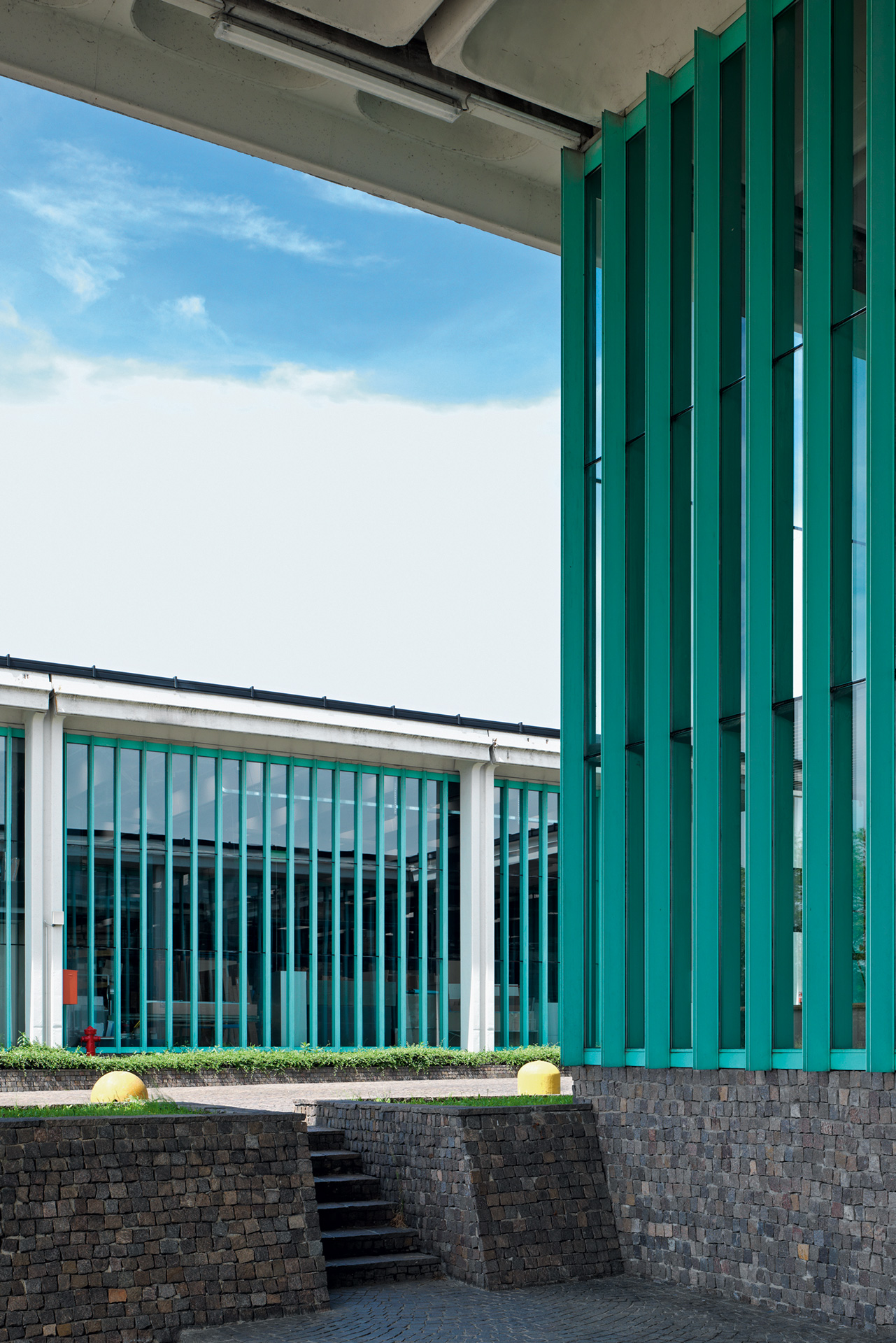
Mangiarotti: technology as a fundamental part of the project
And who better than Angelo Mangiarotti could embody the figure of the new architect? He had no preconceptions or qualms about the forms of the future, which he imagined as a continuous process of experimentation. It was no coincidence that Mangiarotti decided to choose his patented U70 system for the structure of the new building, manufactured by Precompressi Isocell Italia, consisting of a prefabricated post-and-beam system in prestressed concrete. Rapid construction times were necessary to keep pace with a rapidly changing market, and the U70 system, already proven successful, insured almost immediate delivery and installation.
The factory was treated as a tool, as a machine for hosting machinery. Mangiarotti’s great talent lay in his ability to combine the performance potentials of prefabrication technologies with innovation in terms of form and space. This allowed him to create work environments that were not only efficient but also pleasant and comfortable for the factory and office workers. The flexibility of prefabrication also made it possible to adapt the “machine” to meet the needs of the company as it grew and transformed.
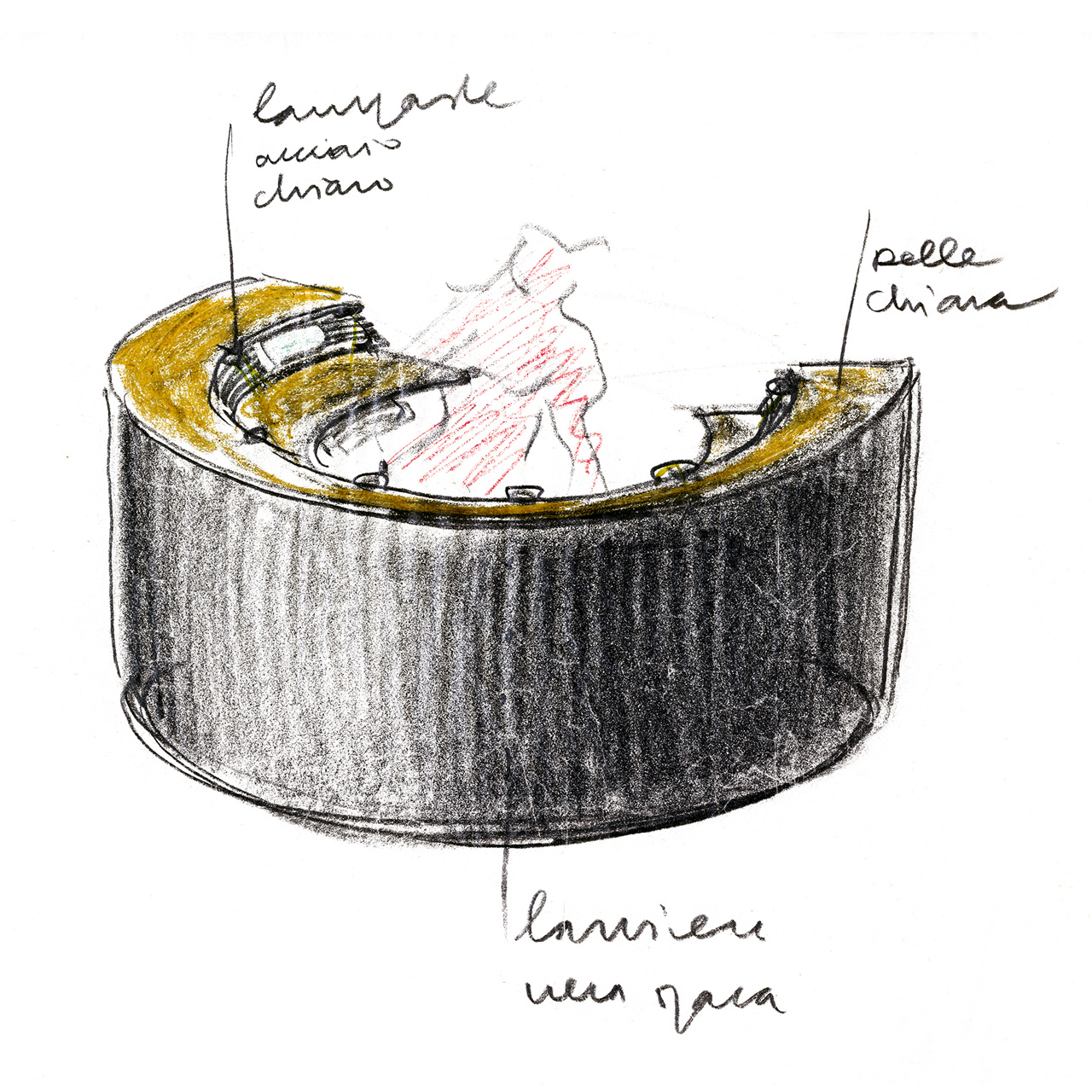
Production & office, a spatial continuity
Mangiarotti’s project was also profoundly innovative in terms of building type. By rejecting the old pattern of the small office building detached from the production plant, he supported from the very beginning the principle of spatial continuity between the two activities. Together with an overhanging roof, the continuous glass and steel facade, stepped back with respect to the structure of the building, created a portico at the entrance that acted as a filter.
Mangiarotti devoted numerous studies to perfecting the reception and office environments at the new factory in Turate. The appearance of the elegantly-proportioned entrance lobby was enhanced by contrasting the prestressed concrete structure with two custom designed elements, a semicircular reception counter in wood and a sinuous staircase leading to the floor above. Industrial design and architecture, two aspects of the same design commitment, went hand in hand, almost announcing the future of UniFor, which from that point on would structure its business more and more around the idea of cohesion between space and furnishings.
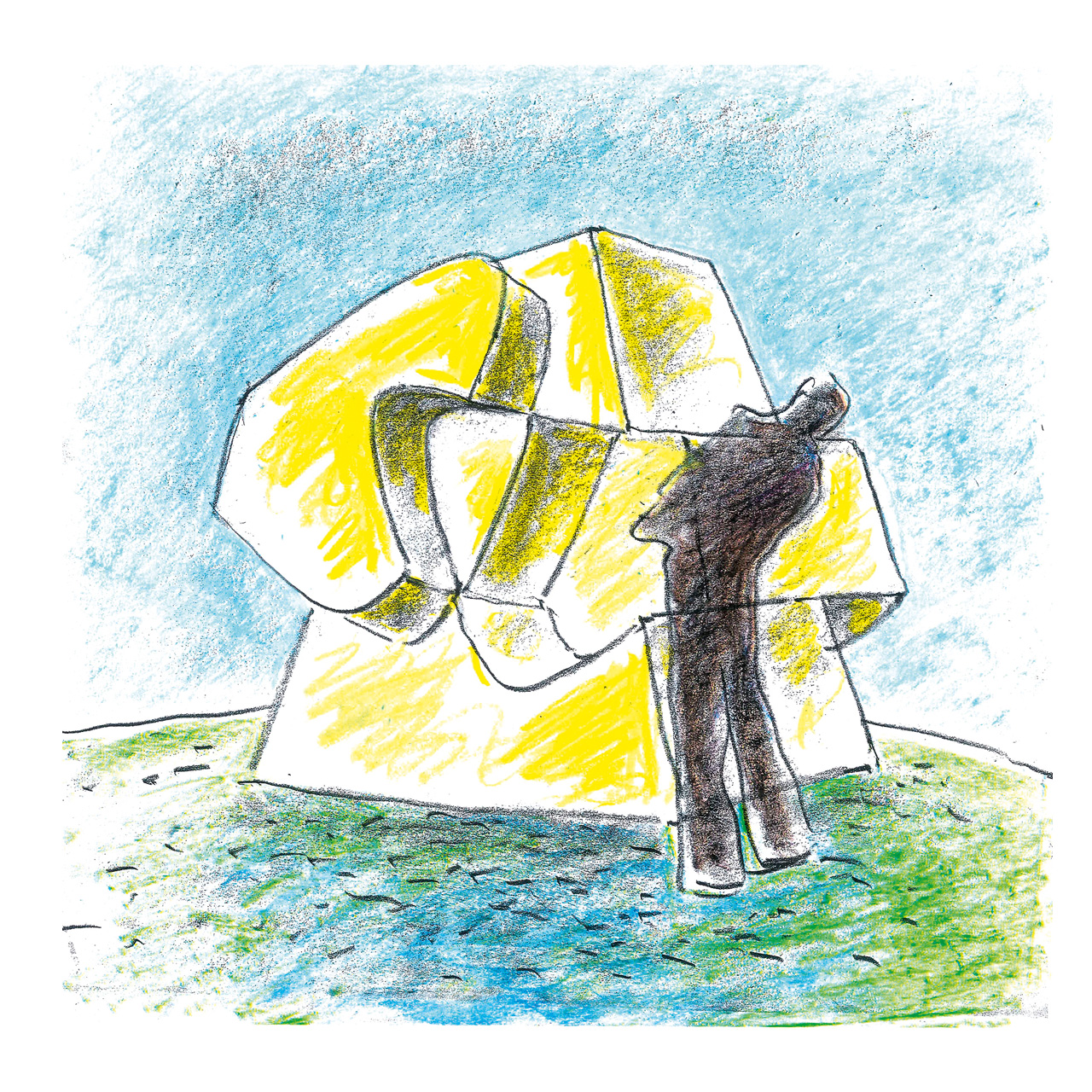
Much more than architecture
Heralding much more than architecture, but also design and sculpture, the relationship between UniFor, Molteni and Mangiarotti succeeded in including every area of design application. Indeed, the 4D system had drawn the attention of Angelo Molteni for both its modularity and mass production possibility, as well as for its craft-inspired finishes, quality details and pureness of elements. The topic of modularity returned in subsequent partnerships too: in the study of the Out-Inside aluminium joint, developed in partnership with UniFor.
In 2002, UniFor’s showroom in Corso Matteotti plays host to the Asimmetria gravitazionale sculptures alongside the new collections, whereas the Divenire sculpture was installed in Turate the following year. The result of an investigation conducted by Mangiarotti into the possibilities of animating a block of stone, the sculpture in Turate is part of an extensive series of works crafted by the author, which also includes another two Divenire sculptures designed between 2006 and 2008 and placed in the showrooms in Melbourne and Sydney.
UniFor actively involved in the promotion of Mangiarotti’s work, throughout the constant support of Fondazione Angelo Mangiarotti, of which Carlo Molteni, Managing Director of UniFor, is an Advisory Board member, and the creation of the Angelo Mangiarotti exhibition set-up. Angelo Mangiarotti. Quando le strutture prendono forma organised by Triennale Milano from 27 January 2023 until 23 April 2023.
UniFor’s involvement in creating the Angelo Mangiarotti. Quando le strutture prendono forma exhibition is part of the brand’s commitment to design culture, a commitment which has meant its involvement - from the onset - in the temporary exhibition sector, not just in its capacity as exhibition display manufacturer, but as an active promoter of Italy’s historical cultural design heritage. A tradition of cultural interventionism that has seen UniFor work alongside leading architects in the most prestigious cultural settings, including: Centre George Pompidou, Triennale Milano, Palazzo Reale in Milan, ADI Design Museum, Museo del Novecento, the Palazzo della Ragione in Padua and Basilica Palladiana in Vicenza and Poldi Pezzoli Museum.
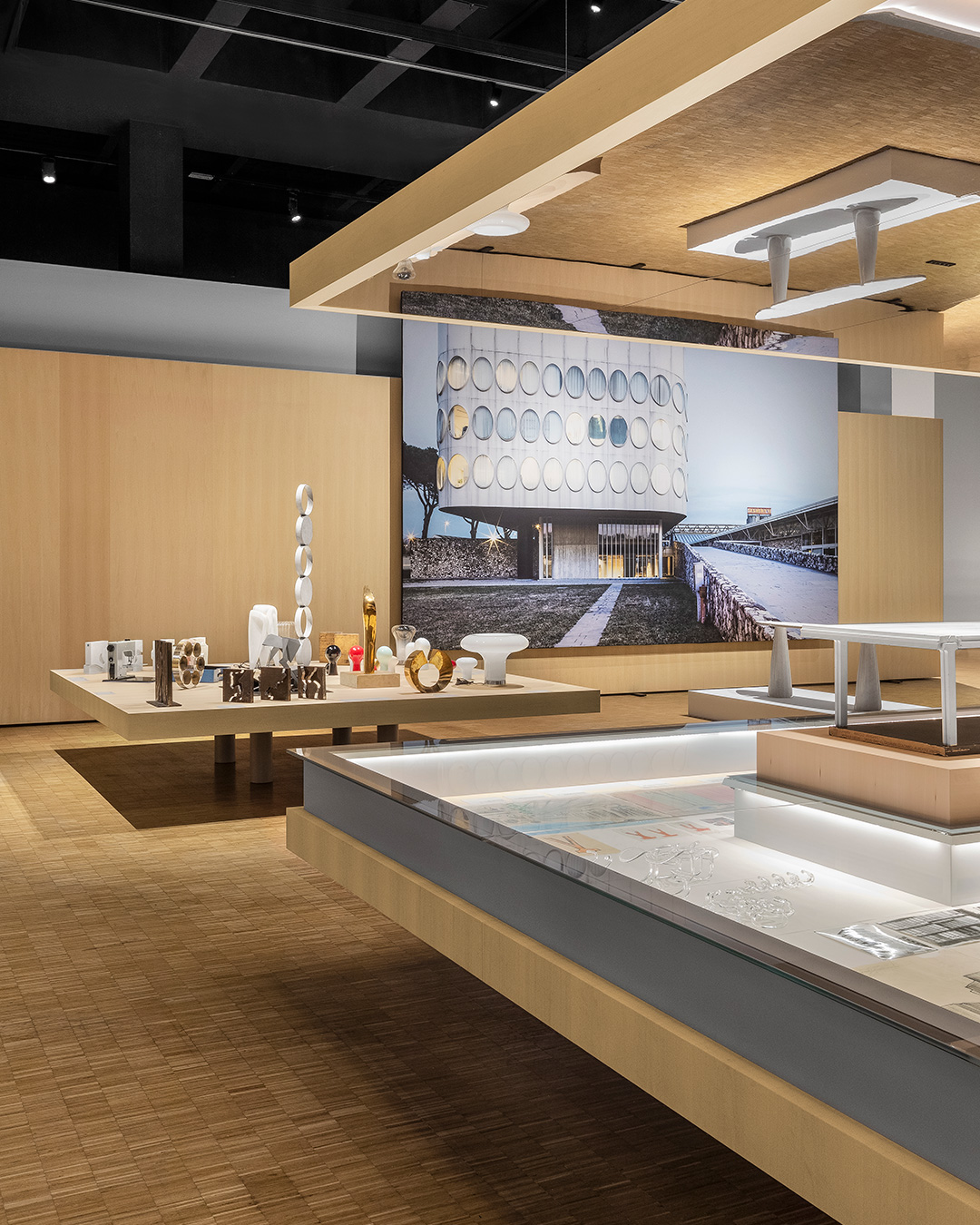
Angelo Mangiarotti. Quando le strutture prendono forma
Procuts, projects, documents and materials, many of which have never been on public display before, will cover over 60 years of the ‘900 design italian master work through the exhibition Angelo Mangiarotti. Quando le strutture prendono forma organised by Triennale Milano from 27 January until 23 April 2023.
Angelo Mangiarotti. Quando le strutture prendono forma
Triennale Milano 27 January – 23 April 2023
Curated by Fulvio Irace, with Francesca Albani, Franz Graf, Luca Pietro Nicoletti,
Marco Sammicheli and with the support of Giulio Barazzetta.
Triennale Milano in collaboration with Fondazione Angelo Mangiarotti
Set-up: Ottavio Di Blasi & Partners With the participation of Renzo Piano
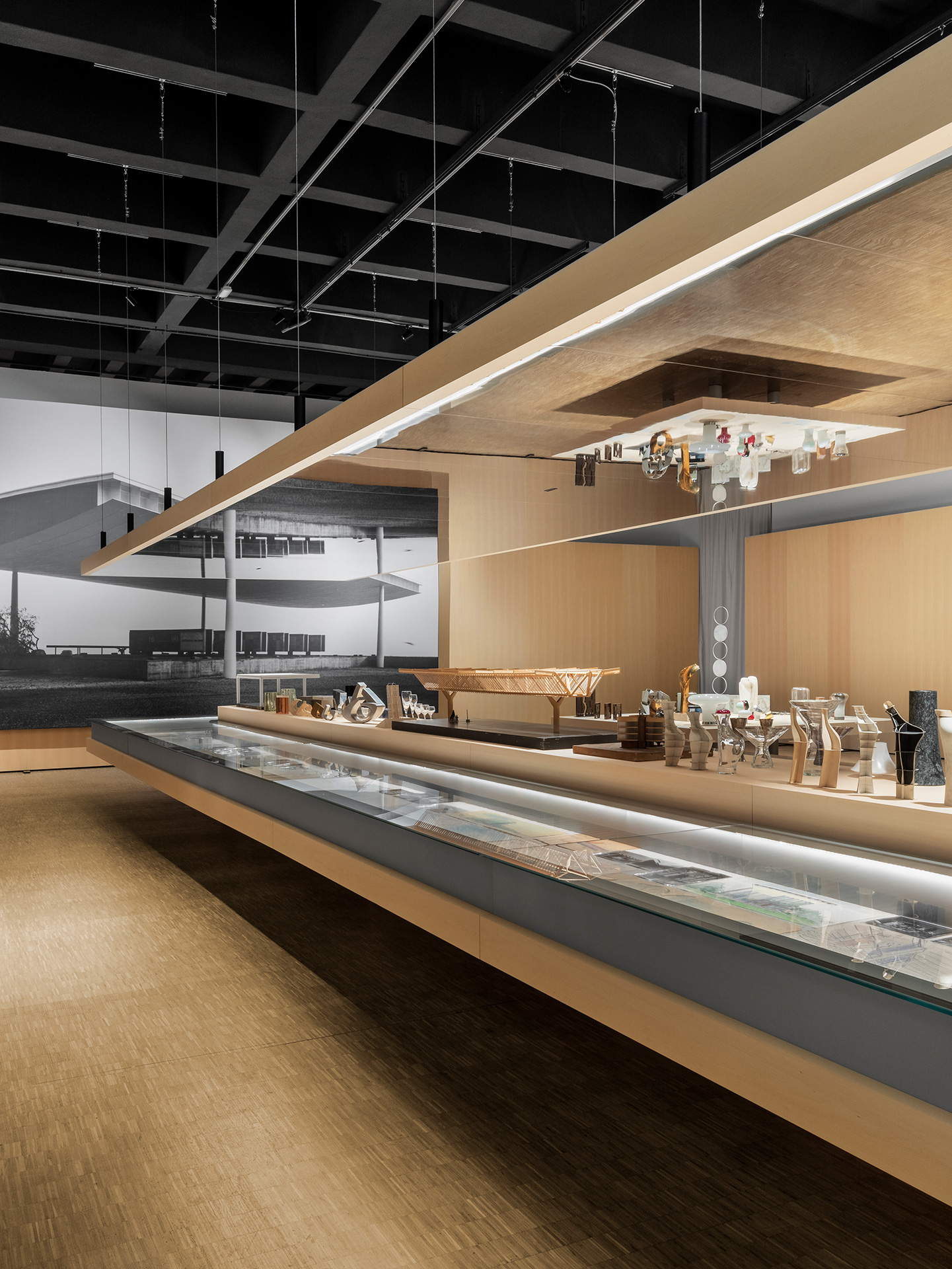
UniFor, the exhibition set-up
UniFor supports one of the most complete and exhaustive retrospectives ever devoted to the Milanese architect and designer, by producing the set-up realizing perimeter panelling and display tables. Based on the metal structure of one of the brand’s iconic products, Progetto 25 designed by Luca Meda, UniFor produced 500 m² of large natural basswood panels, which act as the backdrop to the display of sketches, photographs and documents.
The main table, which is 12 metres in length and 3.20 metres wide, is the result of a painstaking design process conducted in close partnership with Ottavio Di Blasi & Partners Architecture Firm, and it showcases the display materials along with a second and third table. The large table surfaces, also in natural basswood, are distinguished by the presence of a raised central island used to display the models. They appear to float in mid-air as the load-bearing metal structure has been set back, while a perimeter frame incorporates the lighting system and supports the horizontal protective glazing.
The exhibition is accompanied by a video production, entitled "Un Angelo su Milano: Mangiarotti e la città" - An Angel over Milan: Mangiarotti and the city
The short film provides a synthesis of Mangiarotti’s technical and artistic contribution to the city of Milan. The narrative is punctuated by the architect’s speeches, in a succession of themes from the 1950s until today. In conjunction with the scheduled exhibition, Molteni Museum will be offering an insight dedicated to the relationship between the companies in Molteni Group and Angelo Mangiarotti which is set to take place between 2 March and 30 September 2023.
Curator Fulvio Irace, director Francesca Molteni, produced by Muse Factory of Projects in collaboration with Fondazione Angelo Mangiarotti and promoted by Molteni Group.

